The Project
DIMENS MINE is a single player AR game for Android devices. It was developed as part of our fourth semester experimental game jam over the course of 3 weeks.
In this game, your smartphone causes a dimensional rift, and strange objects from the other dimension appear in front of you.
Using hexagonal tiles that appear on the ground, you can move around and try to exit this strange, dreamlike dimension. In the process, you'll keep running into the dimension's inhabitants, who aren't very happy that you're causing their dimension to be unstable. Some of them might demand something from you, others put obstacles in your way, yet some might even help you, if you act cleverly. But watch out! The playing fields will gradually crumble behind you! Make the right decisions and win all the challenges to escape the dimension and not be drawn into the abyss!
GENERAL INFO
•AR mobile game
•Build in Unity
•Fourth semester project at the HTW Berlin
•Team ElLuJuSveKa: Ellen Seger, Lucy Methner,
Julian Nowak, Svenja Bette, Kai Bittighöfer
My Role
• Programming
• Environment SetUp
• Item and Character Design
• Voice Acting



Progress
Each of us had very different ideas of what we could do with the theme of AR. But at the end of the day the most important questions were: What about this app will justify the use of AR? What can only be achieved with this medium? How can we make an experience that feels natural to play, meaning it has to be played why holding the phone in one hand, possibly in both.
We finally settled for the concept of creating the layout of a board game that would appear in real life, like the players would enter an alternate dimension through the screen of their phones. The goal would be to navigate to the end of the board. On their way, encounters with strange creatures demanding different items that also can be collected would ensue. To add a challenging aspect and incorporate the movement of the mobile device, we wanted to include some form of combat.

For Accessibility, speech bubbles should be attached to the talking characters

The currently occupied tile should be highlighted

A possible form of combat could be a system of rock-paper-scissors
After creating some fake screenshots, we quickly sorted out which UI elements we needed and what was necessary to implement. My programming task was the development of the combat system.
The combat system went through several iterations. Initially, I was looking into the possibility of hand recognition and therefore realizing an actual rock-paper-scissors system. This endeavor however was not possible within the given time frame.
I shifted the focus to using the motion of the mobile device. Players were supposed to counteract the movement of their enemy (see image above). While the movement detection was finicky, it did the trick.
Unfortunately, we lacked AR-compatible mobile devices and therefore weren't able to test all our codes in AR. So when we tried to implement the motion-based combatting into the main project, we had to learn that AR did not support the motion detection coding I used.
Finally, I came up with another system, based on Lucy's inventory code. Now players had to focus on an item for a certain amount of time and by doing that selecting it. After the selection, the game-camera would be parented to this object and it would follow the movements made with the phone. Instead of combat, the players would engage in a quick agility test and move the selected objects onto target points around them.
The challenge in the final game


To aid plane detection, we marked a base for the board on the studio floor..


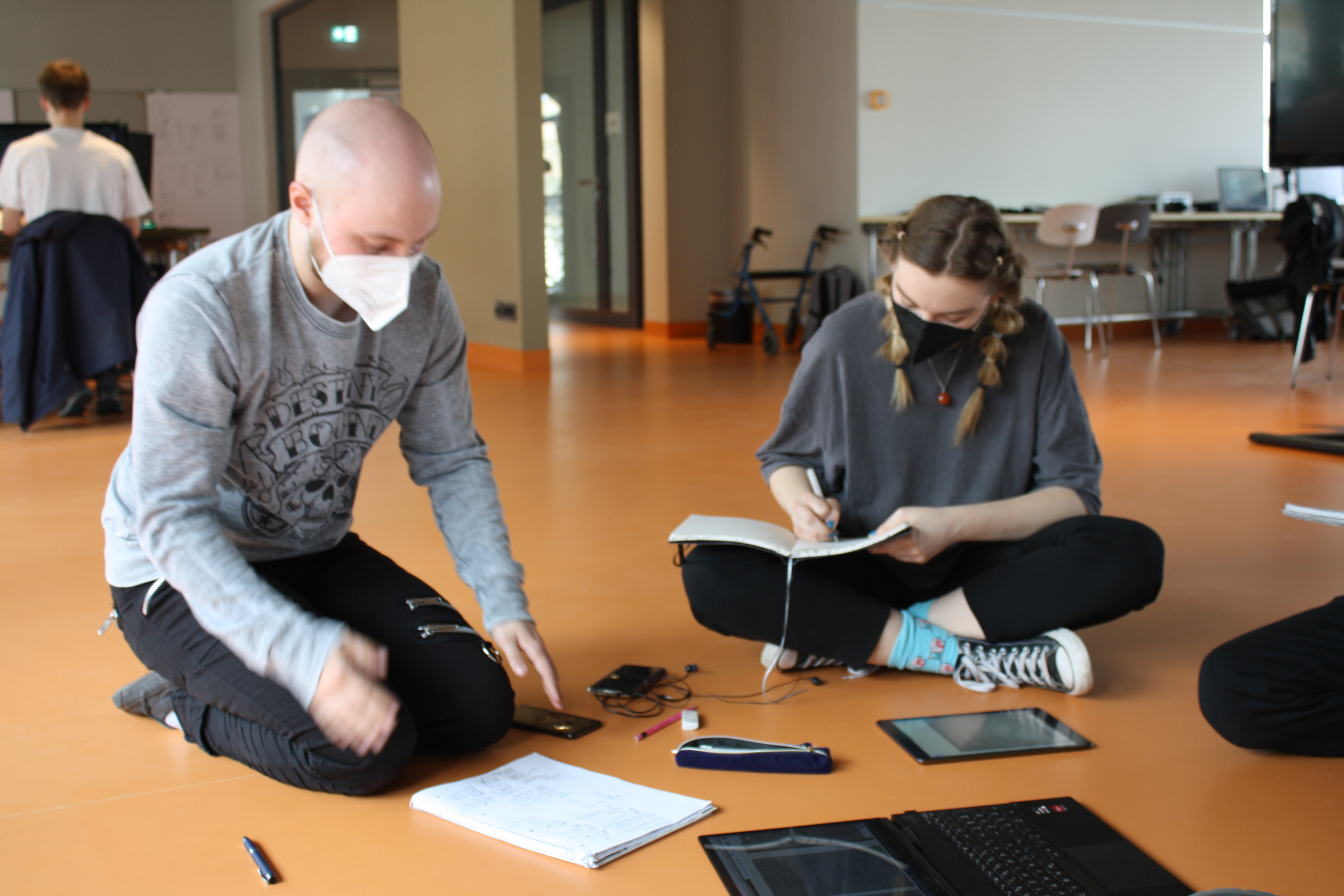
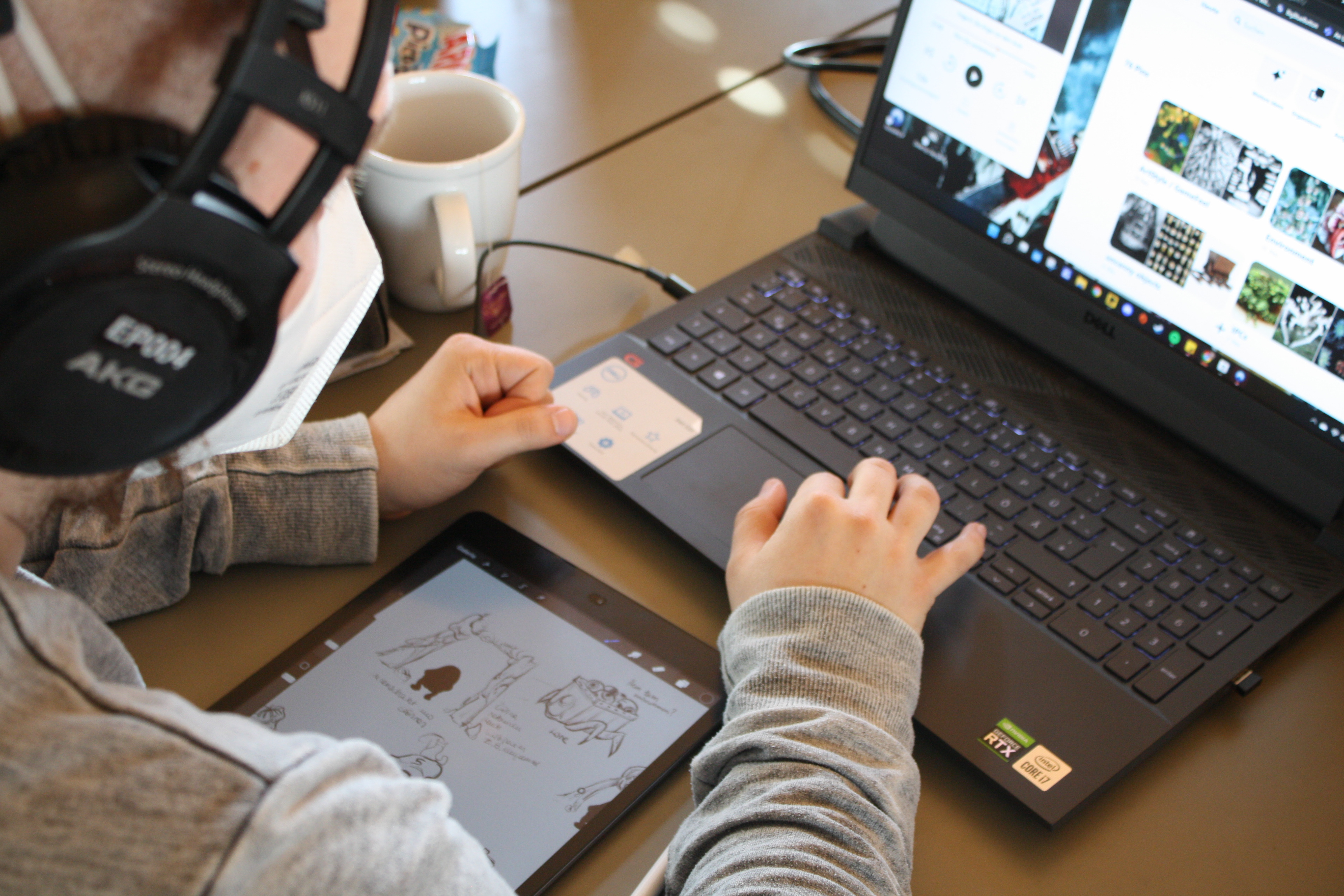

Visual Development
Our goal was to create a different dimension that does not follow the logic of ours. The word of the hour was 'uncanny'. The visual components had to provide a feeling of humorous otherworldliness. What we wanted to create were endearing characters and items that communicate, that this dimension has its own set of rules but not necessarily explain them.



To achieve the effect of uncanniness, we combined seemingly random elements into one or repurposed objects.
To create the environment of the mine, we settled on alien tongues, rocks and floating eyes.
Before we started working on items, we thought about possible elements that could be implemented in the world. Due to a lack of time, we scrapped ideas like the signposts. We chose objects, that support the world building, would be manageable to model and were necessary for the game.
Early drafts for icons to guide players to zones of interest





The first ideas for the dimension's inhabitants were inspired by flowers, mushrooms, minerals and animal hybrids. What we wanted was a recognizable set of characters that is not overcomplicated but impactful and full of charm.
Based on my concept sketches, Lucy Methner created several iterations of some characters we agreed upon. From those we made further selections into the final set of characters. Both Lucy and I proceeded to experiment with different color palettes for each of the characters. Below are mine.




The color palette of the characters was supposed to be colorful in order to emphasize the fantastical and chaotic nature of the setting. Furthermore it aided in creating a better contrast between the AR elements and the real environment. Locating important objects and characters became more easy. Like the initial designs, some of the patterns reference nature. For instance vegetables, like an aubergine. Our final decisions were influenced by what we were able to make in Substance Painter in the remaining time we had.
Apart from characters, we were also in need of items, that the players would find along their way.




The items needed by the NPCs varied from extremely absurd to terribly mundane. We settled for items, that would be realistic to model in the given timeframe and would fit the NPCs best.

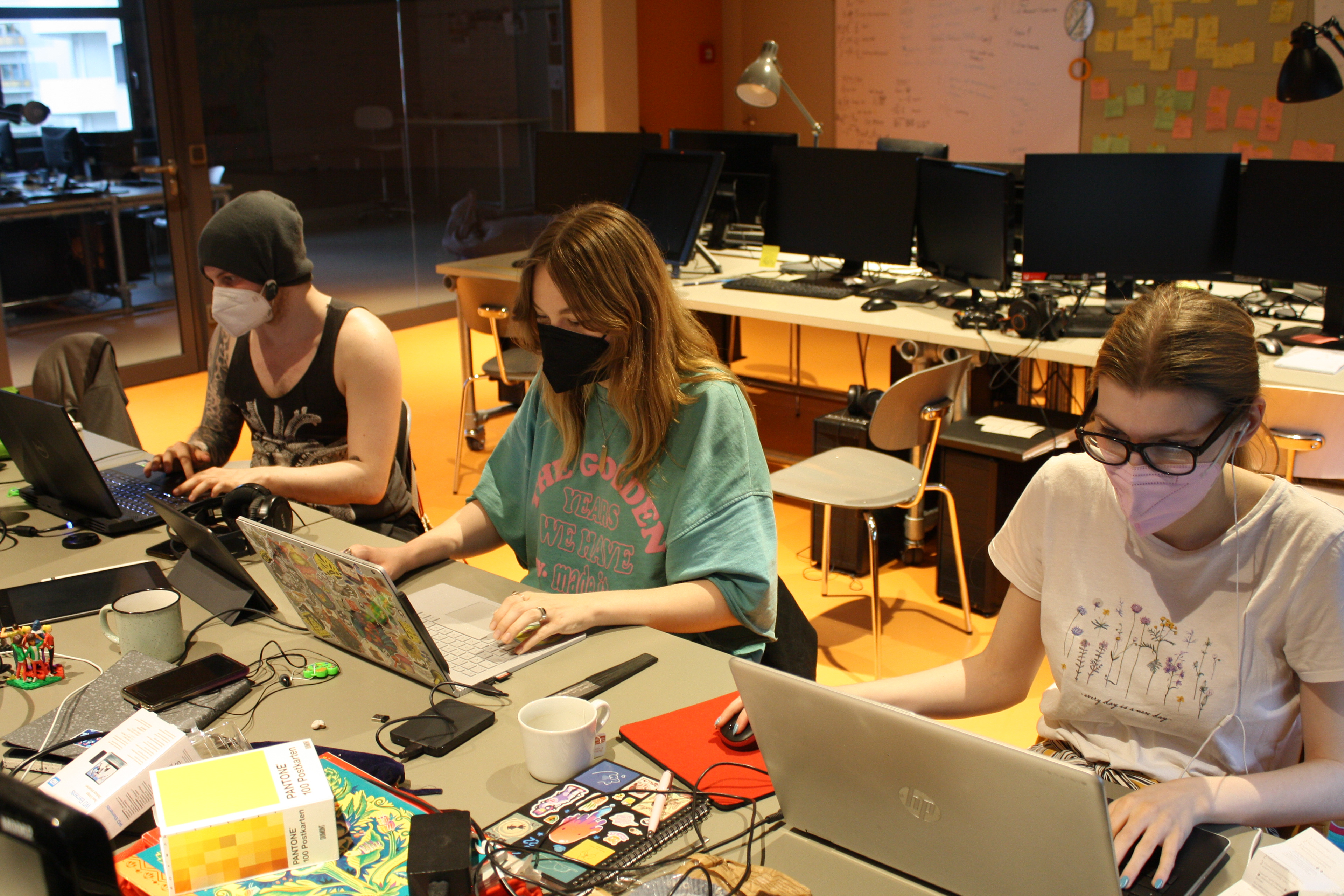
After Svenja Bette modeled the characters, I assisted Lucy in coloring them in Substance Painter, which was my first experience with the program. Below is a selection of some of the final characters.


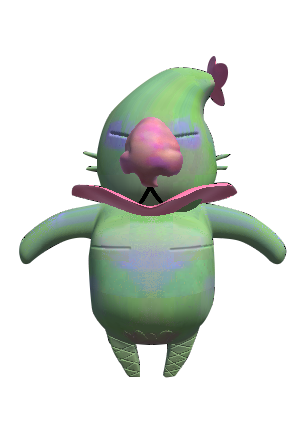

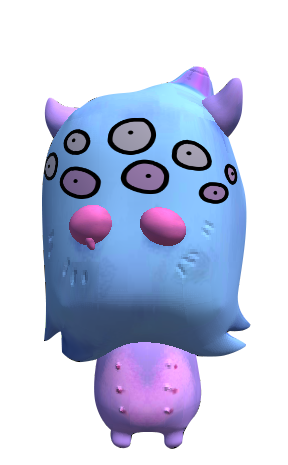
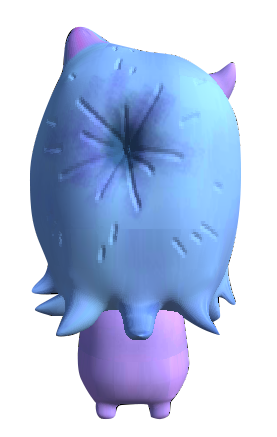




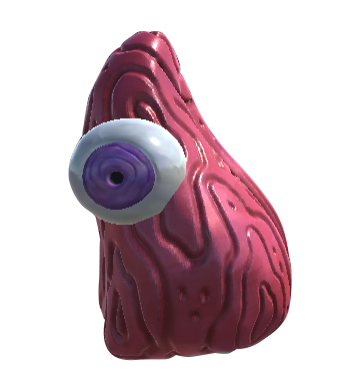



After the assets were done, we needed some further UI. I designed some marker symbols and implemented the eye that we see in the Oracle character and the game title, that I designed as well.
completion
To add the final touches, we recorded the voices of our characters and the feedback sounds. To enhance the goofy and absurd nature of our game, we decided not to create the sounds simply by making weird noises ourselves. Not only did we have a lot of fun in the process, but we even came up with even more ideas on the spot - such as improvising little songs, that would end up becoming character themes in the game.
In the recording booth, each of us was in front of the microphone and overlooked the recording process while not in the recording booth.
To finish the game, all of our assets had to be implemented into the prototype that Julian Nowak had worked on. One of my tasks was to place the environment assets into the world as they would appear when the player steps on the tiles.
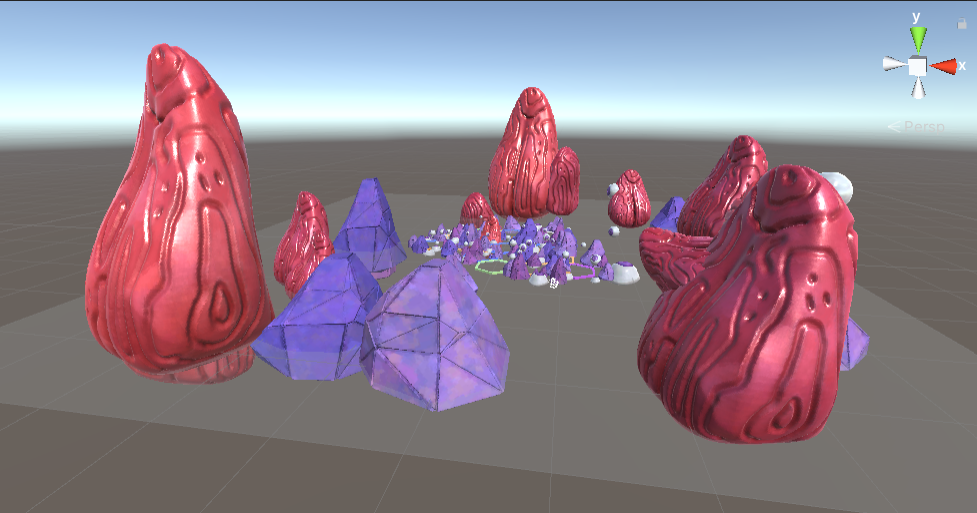

Finally the time had come to test the new assets. Seeing them float around in the real world was an absolute joy. We felt the desired effect we wanted to achieve by using Augmented Reality.


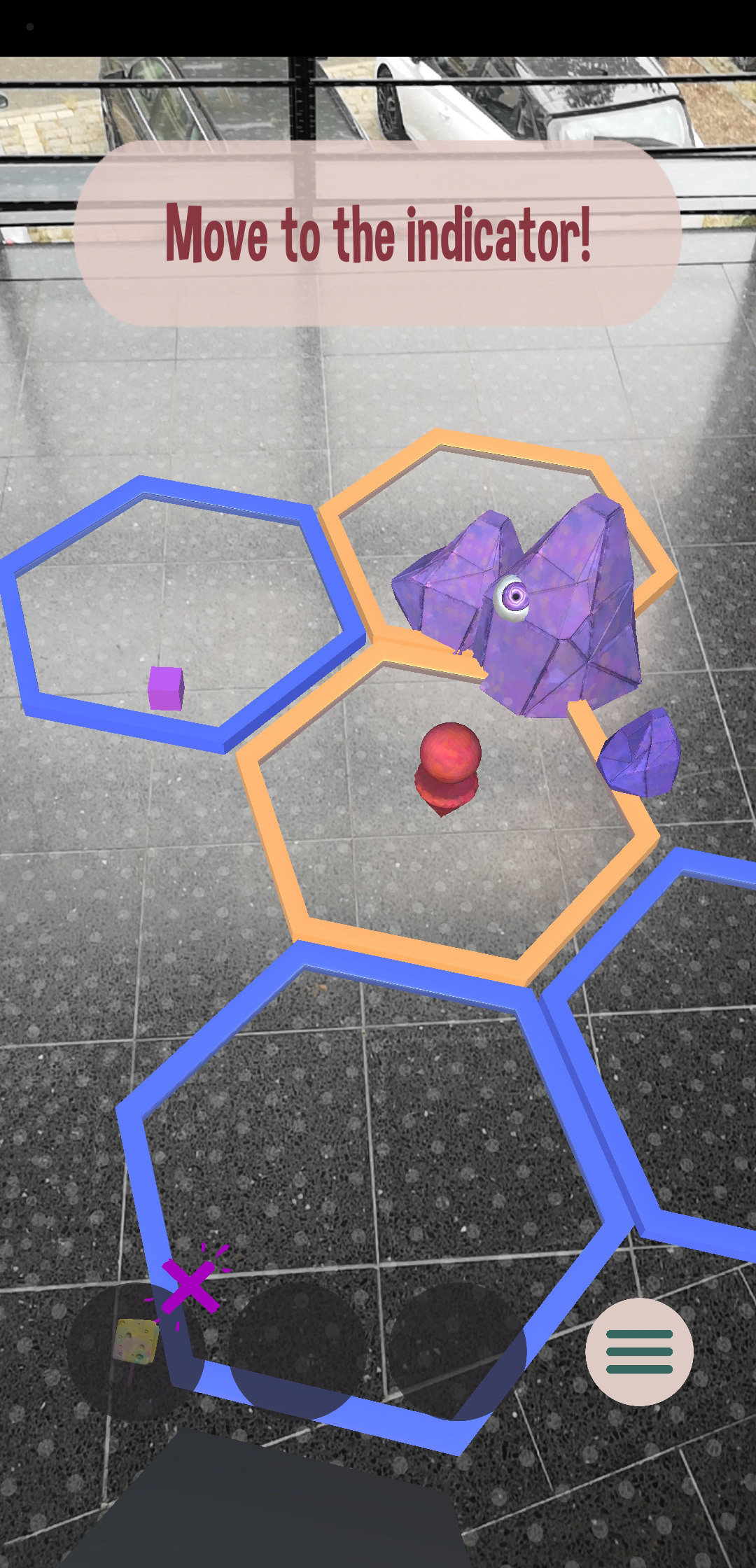



Conclusion
This three-week experimental game jam made us face several challenges. One of them being the theme we picked ourselves: AR. None of us ever worked with AR technology, therefore more than one week was spend on researching the topic alone. Before we started our research we weren't even aware of the fact that not all mobile devices were compatible with Augmented Reality or that in order to test these application, the Unity file had to be build each time. All of these factors slowed down our work immensely.
But we were able to pull through because of good teamwork and open communication. In our previous project, each of us learned valuable lessons in planning and monitoring our workflow. Even though all of us were very satisfied by the team we've assembled and the way we set up our planning, we had to update our mindset to the new, shortened timeframe.
Initially, we assumed that a lot of steps in development had to be done simultaneously in order to meet our deadline, such as programming deciding on the setting. However we learned that we would lose more time doing so. For instance, we would design something not yet programmed, that would end up being scrapped because we would later deem it unnecessary. In that case we would have wasted time on designing something, that would never have been programmed.
Even if it's rough around the edges, we managed to make a complete little game within the three-week timeframe, created six individual NPC's including voice lines, collectible items and environment assets – all in a field, that none of us were familiar with. We are very proud of our first venture in AR.
The team: Julian Nowak, Svenja Bette, Lucy Methner, Kai Bittighöfer, Ellen Seeger
